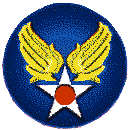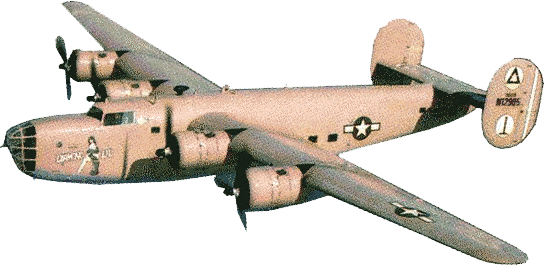|
|
|
..
..
B 17 Flying Fortress......B 24 Liberator....B26 Maurauder
 The Flying Fortress is one of the most famous airplanes ever built. The B-17 prototype first flew on July 28, 1935. Few B-17s were in service on December 7, 1941, but production quickly accelerated. The aircraft served in every WW II combat zone, but is best known for daylight strategic bombing of German industrial targets. Production ended in May 1945 and totaled 12,726. In March 1944 this B-17G was assigned to the 91st Bomb Group--"The Ragged
Irregulars"--and based at Bassingbourn, England. There it was named Shoo Shoo Baby by its crew, after a
SPECIFICATIONS PERFORMANCE |
B 24 -
The B-24 was employed in operations in every combat theater during the war. Because of its great range, it was particularly suited for such missions as the famous raid from North Africa against the oil industry at Ploesti, Rumania on August 1, 1943. This feature also made the airplane suitable for long over-water missions in the Pacific Theater. More than 18,000 Liberators were produced. The B-24D on display flew combat missions from North Africa in 1943-44 with the 512th
Bomb Squadron. It was flown to the U.S. Air
SPECIFICATIONS PERFORMANCE |
NORTH AMERICAN B-25B  The B-25 medium bomber was one of America's most famous More than 9,800 B-25s were built during WW II. The airplane on display was rebuilt by North American to the configuration of the B-25B used on the Tokyo Raid and was flown to the Air Force Museum in April 1958. SPECIFICATIONS PERFORMANCE |
|
Although the Marauder did not make its first flight until November 25, 1940, its design showed such promise that 1,131 B-26s were ordered by the Air Corps in September 1940. The airplane began flying combat missions in the Southwest Pacific in the spring of 1942, but most of the B-26s subsequently assigned to operational theaters were sent to England and the Mediterranean area. Bombing from medium altitudes of 10,000 to 15,000 feet, the Marauder had the lowest
loss rate of any Allied bomber--less than one-half of one percent. By the end of WW II, it
had flown more than The Marauder on display was flown in combat by the Free French during the final months of WW II. It was obtained from the French airline Air France training school near Paris in June 1965.
SPECIFICATIONS PERFORMANCE |
|
BOEING B-29

The Boeing B-29 was designed in 1940 as an eventual replacement for the B-17 and B-24. The first one built made its maiden flight on September 21, 1942. In December 1943 it was decided not to use the B-29 in the European Theater, thereby permitting the airplane to be sent to the Pacific area where its great range made it particularly suited for the long over-water flight required to attack the Japanese homeland from bases in China. During the last two months of 1944, B-29s began operating against Japan from the islands of Saipan, Guam and Tinian. With the advent of the conflict in Korea in June 1950, the B-29 was once again thrust into battle. For the next several years it was effectively used for attacking targets in North Korea. The B-29 on display, named "Bockscar," was flown to the U.S. Air Force Museum on September 26, 1961. It is the airplane from which the second atomic bomb was dropped on Nagasaki on August 9, 1945. SPECIFICATIONS PERFORMANCE |

 FORTRESS"
FORTRESS"




